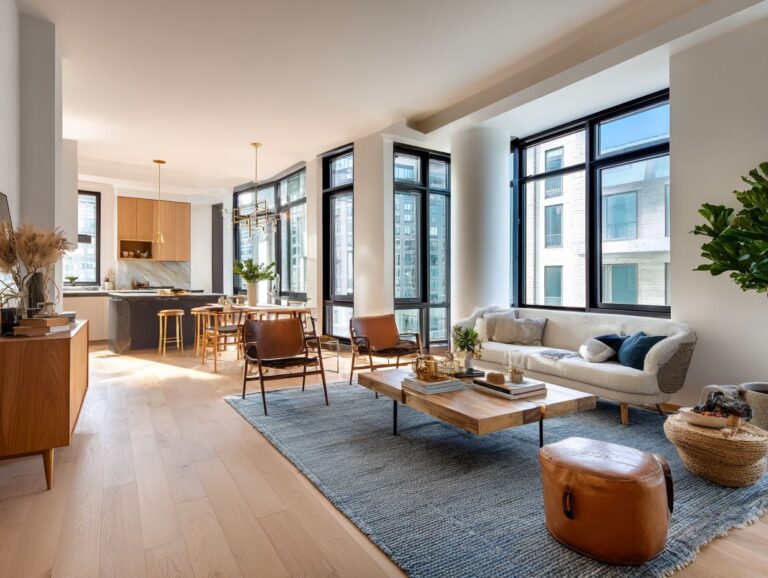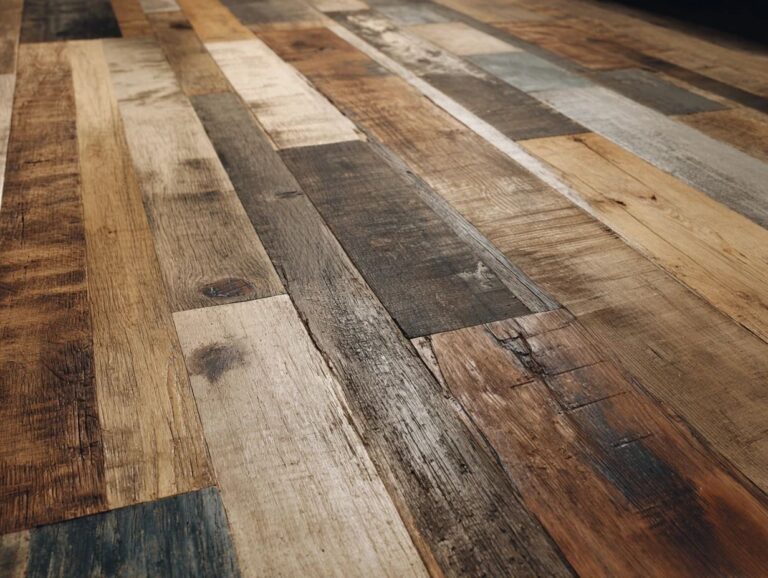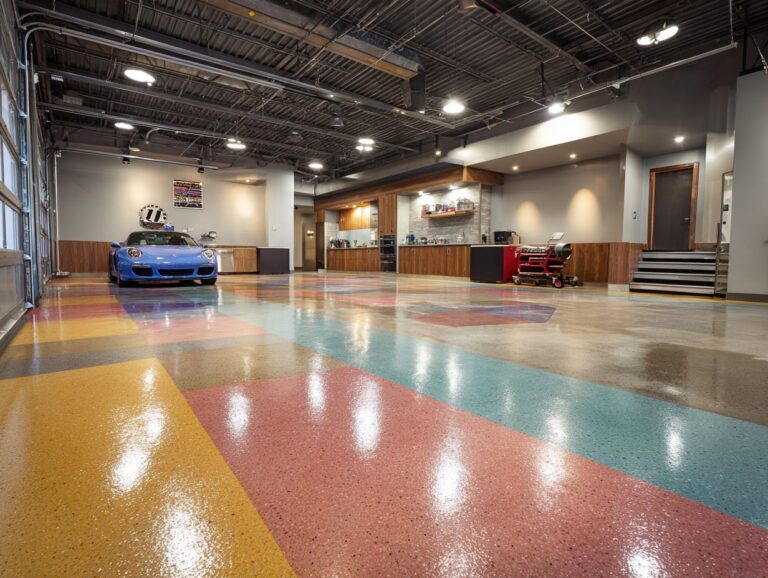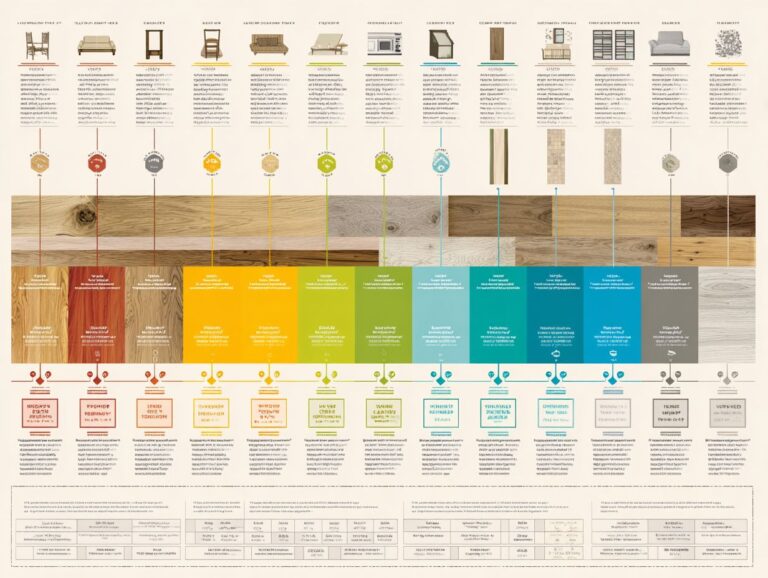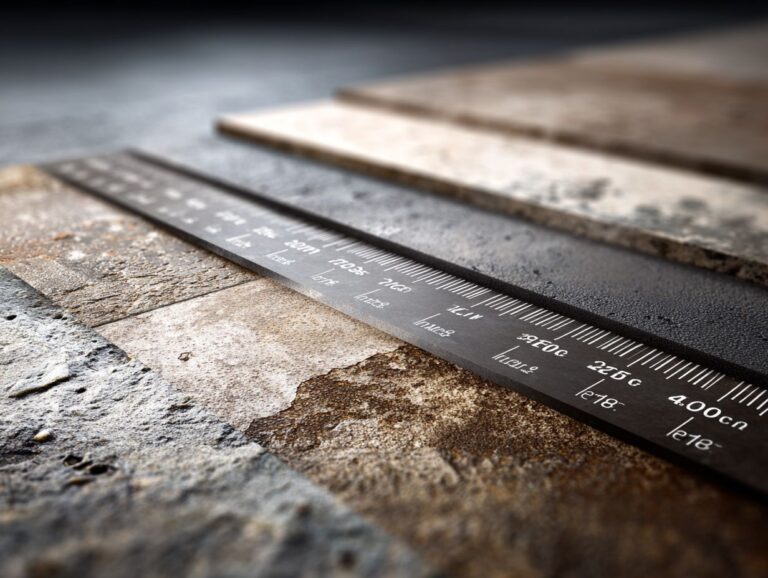Laminate Flooring Thickness Guide – 7mm vs 8mm vs 12mm
When choosing laminate flooring, thickness can significantly impact your home’s comfort and durability. For UK homeowners, knowing the differences between common thicknesses like 7mm, 8mm, and 12mm is important. At Brothers Floor Covering, we’ll guide you through the benefits of thicker laminate and help you make an informed decision. Check out our laminate flooring thickness guide to find the best choice for you and your way of living!
Key Takeaways:
1.
2.
3.
Contents
- Overview of Laminate Thickness Options
- Comparative Analysis of Thickness
- Laminate Flooring Thickness Comparison Statistics
- Installation Considerations
- Cost Implications
- Best Uses for Each Thickness
- Maintenance and Care
- Frequently Asked Questions
- What is the difference between 7mm, 8mm, and 12mm laminate flooring?
- What are the benefits of choosing a thicker laminate flooring?
- Which thickness of laminate flooring is best for my home?
- Can I install all three thicknesses of laminate flooring in my home?
- How does the thickness affect the appearance of laminate flooring?
- Is there a significant price difference between 7mm, 8mm, and 12mm laminate flooring?
Understanding Laminate Flooring
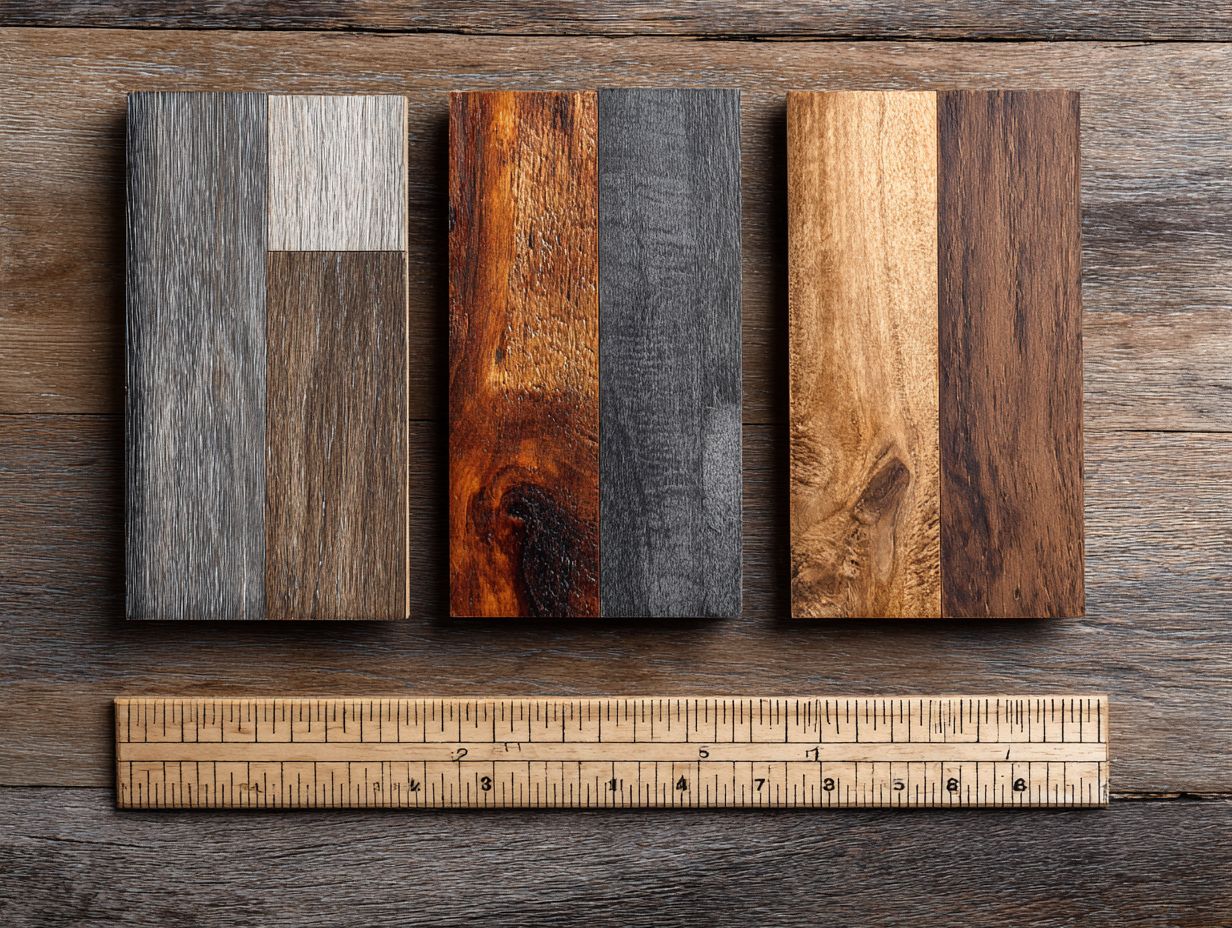
Laminate flooring is a synthetic product made from high-density fibreboard (HDF) that mimics the appearance of wood or stone.
The manufacturing process includes multiple parts: a central layer made of HDF for strength, a design layer with a detailed image, and a protective top layer to prevent scratches and stains.
Homeowners gravitate towards laminate due to its affordability compared to hardwood, typically costing 30-50% less.
Installation is user-friendly; many products feature tongue-and-groove systems, allowing for easy DIY projects without professional help.
As a result, laminate flooring has surged in popularity, providing a stylish, durable option for various spaces.
Importance of Thickness in Flooring
The thickness of laminate flooring significantly impacts its durability, sound insulation, and overall performance characteristics in different environments.
Generally, thicker laminate ranges from 10mm to 12mm, offering superior longevity. For example, a 12mm laminate can last up to 25% longer than an 8mm one in high-traffic areas, making it a better choice for homes with pets or children.
Thicker planks provide better sound insulation, reducing noise by 20-30%, which is especially beneficial in multi-story buildings.
When choosing laminate, consider your specific needs: if you prioritize comfort and acoustics, opt for 12mm; for budget installations, 8mm might suffice in lower traffic areas.
Overview of Laminate Thickness Options
To make a good choice when buying laminate flooring, it’s important to understand the various thickness options. If you’re interested in exploring more about how laminate flooring is constructed and its benefits, you might find our deep dive into laminate flooring construction and benefits particularly insightful.
What is 7mm Laminate Flooring?
7mm laminate flooring is often considered a budget-friendly option that provides a balance of affordability and durability for low to moderate traffic areas.
This type of flooring is particularly suited for bedrooms and living rooms, where foot traffic is less intensive. In spaces like kitchens and bathrooms, its limitations become apparent due to its susceptibility to moisture damage.
Notable brands available in the UK include:
- Brothers Floor Covering, which offers a wide variety of designs
- Quick-Step, known for its durability and realistic wood finishes
If you decide to use 7mm laminate in areas with more moisture, pick water-resistant types.
What is 8mm Laminate Flooring?
8mm laminate flooring is a good option, providing better durability than 7mm while remaining budget-friendly for most homeowners.
This thickness works well for many uses, offering improved sound insulation that makes areas like living rooms and bedrooms more comfortable.
8mm laminate flooring can lower noise from walking and talking in living rooms, improving family time. Extra soundproofing in bedrooms helps you sleep better by providing a quiet environment.
Its resilience makes it suitable for high-traffic areas, like hallways, combining practicality with aesthetic appeal. Choose a style that complements your home decor, and consider an underlay to further improve sound absorption.
What is 12mm Laminate Flooring?
12mm laminate flooring is the thickest standard option, renowned for its exceptional durability and superior sound insulation properties.
This thickness makes it ideal for high-traffic areas like hallways and living rooms, where wear and tear is more pronounced.
12mm laminate is compatible with underfloor heating systems, providing warmth without compromising comfort. Brands such as Pergo and Quick-Step offer high-quality 12mm options, ensuring longevity and style.
Be aware that the initial investment is typically higher than thinner alternatives, which could be a consideration for budget-conscious homeowners. Considering the benefits and costs can help make an informed decision.
Comparative Analysis of Thickness
Studying various laminate thicknesses shows clear benefits in terms of strength, noise reduction, and how comfortable they feel to walk on. For those curious about how these benefits compare across different flooring materials, our Hardwood Floor Thickness Guide provides an insightful comparison.
Laminate Flooring Thickness Comparison Statistics
Laminate Flooring Thickness Comparison Statistics
Laminate Flooring Thickness: Thickness Options
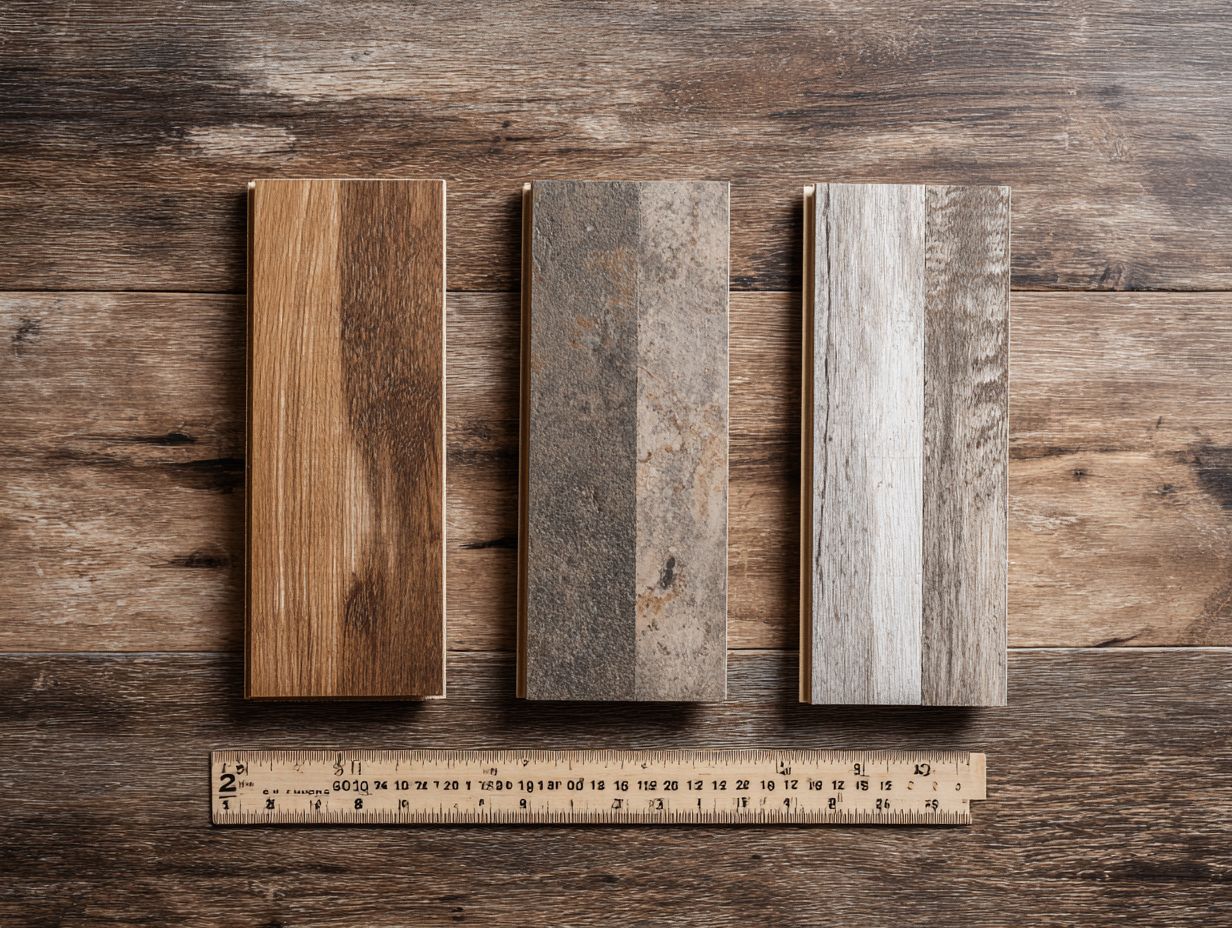
Performance Factors: Impact Resistance
Performance Factors: Sound Insulation
Performance Factors: Cost Comparison
The Laminate Flooring Thickness Comparison Statistics provides a detailed look at the different thickness choices in the laminate flooring market, explaining how they perform in terms of impact resistance, sound insulation, and price. This information is important for both consumers and industry professionals, helping them find a balance between performance and budget.
Laminate Flooring Thickness offers four primary options: 6mm-7mm, 8mm, 10mm, and 12mm. Each thickness level has distinct implications for durability and performance factors that are essential to consider when selecting flooring options for different environments, such as residential or commercial spaces.
- Impact Resistance: Thickness significantly affects the floor’s ability to withstand impact. The data shows a clear progression, with 6mm-7mm offering 30% resistance, increasing to 50% for 8mm, 70% for 10mm, and reaching 90% for 12mm. Thicker floors can handle more wear and tear, making them good for places with a lot of foot traffic.
- Sound Insulation: Thicker laminate flooring also improves sound insulation. The figures indicate a similar trend, with 40% insulation for 6mm-7mm options, and improving up to 60% for 8mm, 80% for 10mm, and 95% for 12mm. This makes thicker options more desirable for spaces where noise reduction is a priority.
- Cost Comparison: Cost is a critical consideration, and as expected, the thicker the laminate, the higher the price. The 6mm-7mm costs $15, 8mm costs $20, 10mm costs $25, and 12mm costs $35. Consumers must weigh these costs against the performance benefits to determine the best fit for their needs and budget.
Overall, the Laminate Flooring Thickness Comparison shows how different thicknesses influence performance and cost. For people who want long-lasting materials and less noise, choosing thicker products such as 10mm or 12mm is beneficial despite the higher cost. But, for places where fewer people go and there are budget limits, 6mm-7mm or 8mm could be adequate, offering a cost-effective solution with reasonable performance. This information helps you make informed decisions when buying laminate flooring.
Durability and Wear Resistance
Thicker laminate flooring generally lasts longer and withstands damage better, making it suitable for areas with heavy foot traffic.
For instance, 12mm laminate can withstand over 3,000 cycles in the Abrasion Criteria test, which measures resistance to wear. In contrast, 7mm and 8mm options typically handle around 1,500 and 2,000 cycles, respectively.
This significant difference means that in real-world applications, a 12mm laminate will likely show fewer scratches and dents, lasting longer in settings such as busy family homes or commercial spaces. Choosing 12mm options for flooring is a wise decision for anyone looking for durability and quality.
Sound Insulation Properties
The sound insulation properties of laminate flooring improve significantly with increased thickness, particularly in multi-story homes.
A 12mm laminate can reduce noise transmission by up to 30% compared to 8mm or 10mm options. For optimal results, consider integrating an acoustic underlayment during installation, which further absorbs sound.
Make sure the base layer works well with your laminate and is dense for improved results. Sealing gaps between planks can prevent sound leaks, enhancing overall insulation.
By focusing on these details during installation, you can achieve a significantly quieter living environment.
Comfort and Feel Underfoot
Thicker laminate flooring feels more comfortable to walk on, improving the experience in your living areas.
Many UK homeowners have noted a significant improvement in comfort after switching to thicker laminate options, typically ranging from 12mm to 15mm in thickness.
For instance, Sarah from Manchester reported that her living room felt warmer and more inviting, while Mark in London mentioned how his bedroom became noticeably quieter.
To assess your options, consider:
- Eco-Friendly Laminate for sustainability, which offers a 15mm thickness,
- Quick-Step’s range, known for great acoustics and comfort.
Adding thicker flooring can make a room feel warm and comfortable.
Installation Considerations
When choosing laminate thickness, it’s important to think about installation, especially the needs of the subfloor and how easy it is to install. If you’re looking into alternatives, consider how reclaimed wood flooring differs in terms of sourcing, costs, and installation to make a well-informed decision.
Subfloor Requirements for Different Thicknesses
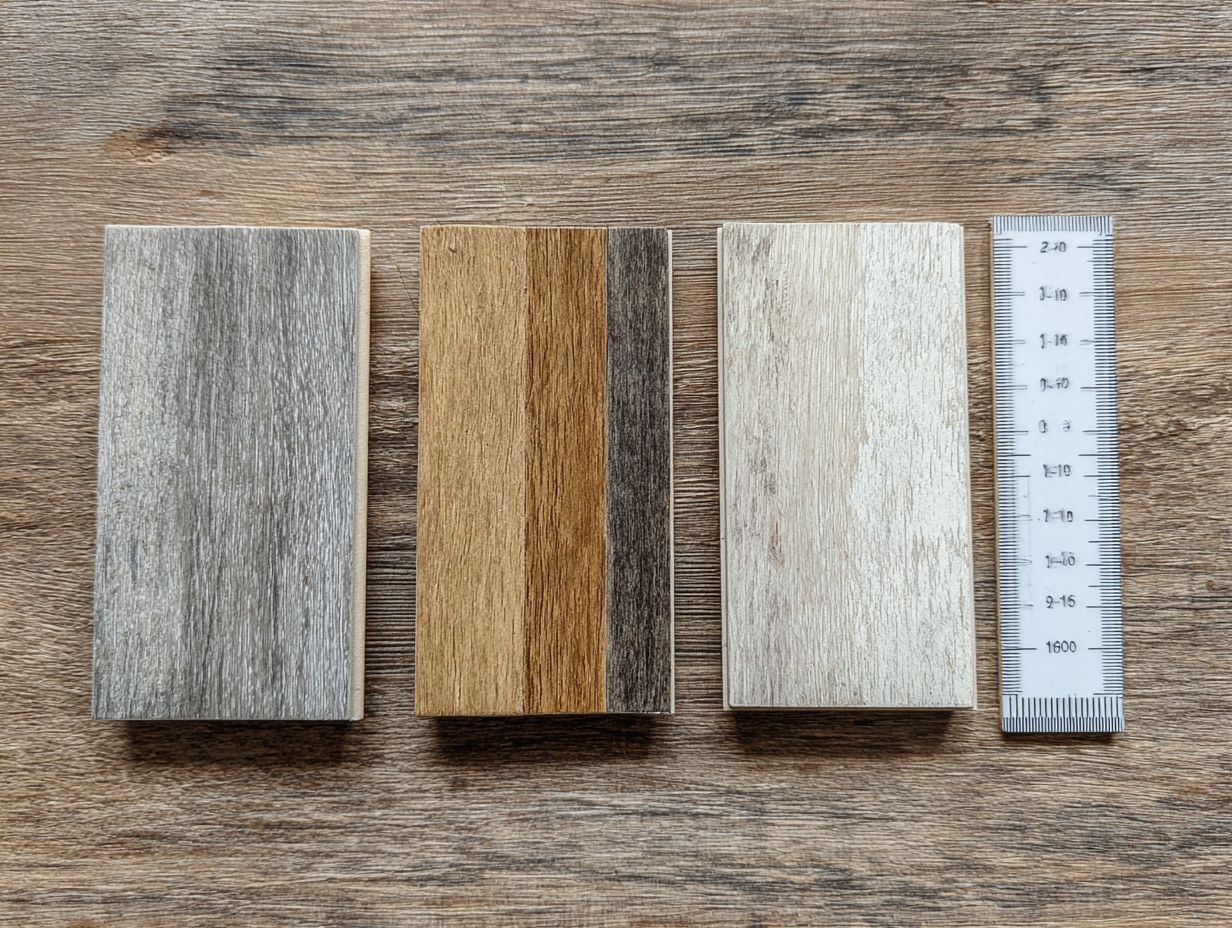
Different laminate thicknesses have varying subfloor requirements that must be met for proper installation.
For example, planks that are 7 mm thick or thinner need a flat subfloor to prevent showing flaws, which can cause noise or uneven areas.
To prepare, check for the following:
- Moisture levels (should be below 4%)
- Cracks or chips (repair with leveling compound)
- Debris removal (clean thoroughly)
If repairs are necessary, costs can vary between $1 and $5 per square foot based on how serious the issue is. By fixing your subfloor correctly, your laminate flooring will last longer and look better.
Ease of Installation
The ease of installation varies with laminate thickness, influencing the choice for DIY enthusiasts versus professional installers.
For laminate thicknesses of 8mm to 12mm, DIY installation is typically manageable, requiring minimal tools like a jigsaw, measuring tape, and spacers.
Homeowners can find detailed YouTube tutorials that show them the steps, usually taking about 4-6 hours.
Thicker laminates (14mm and above) might need professional tools and skills, especially to get a perfect result.
Hiring an expert usually costs from $1.50 to $2.50 per square foot, so it’s important to balance your budget with the quality you want.
Cost Implications
Knowing the cost of various laminate thicknesses is important for planning your flooring budget properly.
Price Range of 7mm, 8mm, and 12mm Options
The price range for laminate flooring varies significantly, with 7mm options typically costing GBP10-GBP15 per square meter, while 12mm can exceed GBP20 per square meter.
When selecting laminate flooring, consider durability and warranty period as influential factors. For instance, brands like Quick-Step and Balterio offer excellent durability, often rated for heavy foot traffic, which justifies the higher price tag.
If you’re on a budget, check stores like Dunedin, where seasonal sales might drop 12mm flooring prices to around GBP17 per square meter.
Consider investing in underlay, which improves comfort and insulation; options range from GBP1.50 to GBP3.00 per square meter. Always factor in installation costs, usually between GBP5-GBP10 per square meter, depending on complexity.
Long-term Value and Investment
Choosing thicker laminate flooring can offer better long-term value because it lasts longer and costs less to replace.
For instance, a 12mm laminate generally lasts up to 30 years, whereas an 8mm option may only last around 15 years.
Homeowners who upgraded from 8mm to 12mm often report a decrease in maintenance costs, as the thicker material resists scratches and dents. One case study revealed a family saved approximately $1,500 in replacement expenses over a decade by choosing the thicker option.
To make the best investment decision, figure out ROI by looking at how long it lasts and how much upkeep costs, considering your area’s weather and how much it’s used.
Best Uses for Each Thickness
Knowing which laminate thickness works best for different needs can help homeowners pick what suits their way of living. For those considering hardwood options, our hardwood floor thickness guide offers detailed comparisons of 3/4, 5/16, and 3/8 options.
Recommended Areas for 7mm Flooring
- 7mm laminate flooring is recommended for areas with low foot traffic, such as guest rooms and formal dining spaces.
In guest rooms, the 7mm thickness provides a comfortable feel underfoot while being easy to install and maintain.
For formal dining areas, you might want to use area rugs to add visual warmth and guard against spills.
Make sure to clean often with a damp mop to stop dirt from collecting, and use a laminate floor cleaner for tough stains. This will help maintain its appearance over time while ensuring it remains suitable for low-traffic areas.
Recommended Areas for 8mm Flooring
8mm laminate flooring is suitable for areas with moderate to heavy foot traffic, such as living rooms and hallways, offering a good mix of strength and affordability.
8mm laminate is a good choice for homes with floor heating systems, as it complements the warmth.
Its water-resistant options, like those from brands such as Pergo, offer assurance in areas where spills are likely.
Aesthetically, you’ll find a variety of finishes ranging from classic oak to modern gray tones, allowing you to customize your interior design seamlessly.
When choosing your laminate, think about both how it looks and how well it works. Make sure it fits in with your home and stands up to daily use.
Recommended Areas for 12mm Flooring
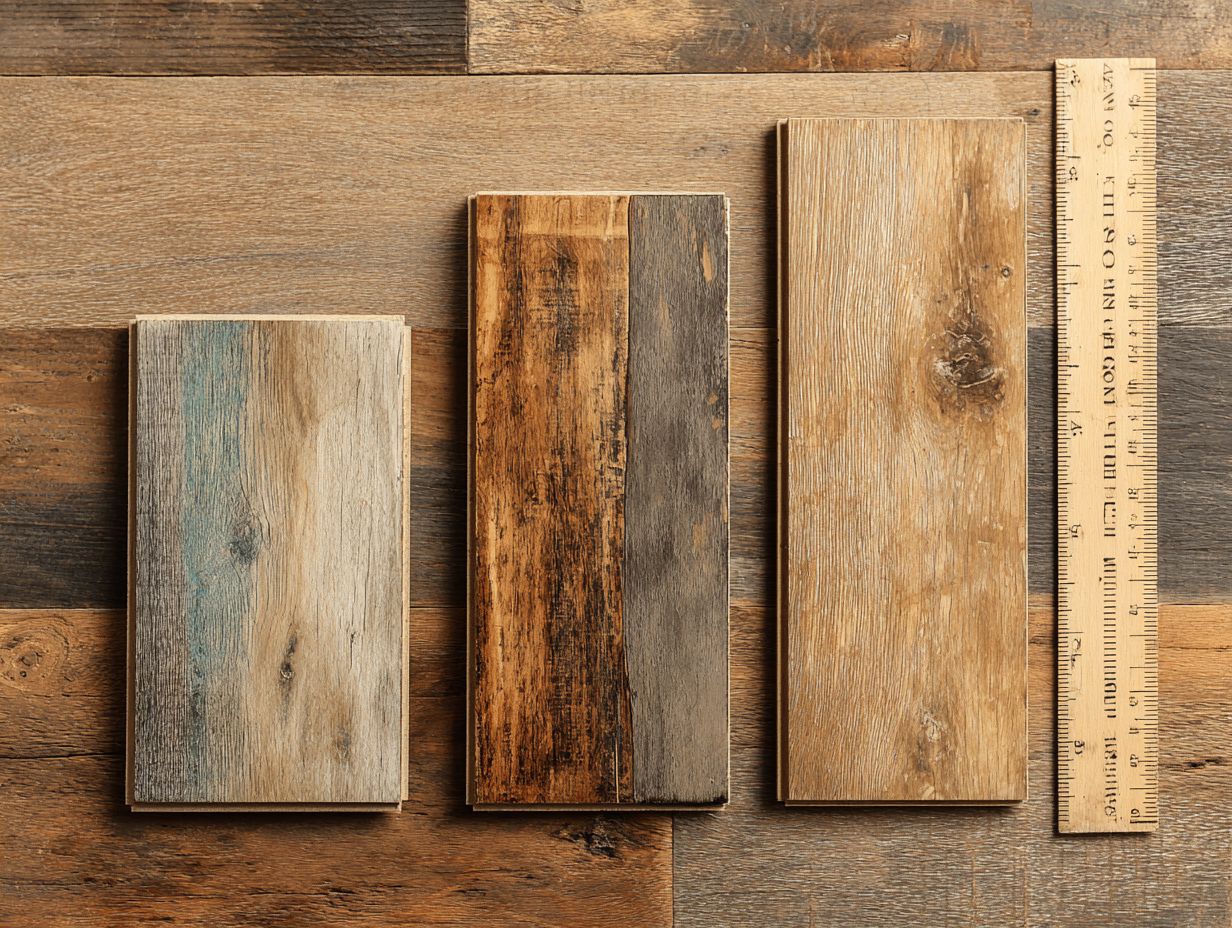
12mm laminate flooring is highly recommended for high-traffic areas such as kitchens and commercial spaces due to its exceptional durability.
The sturdy design provides better protection against scratches and dents, making it ideal for places with a lot of foot traffic.
A recent installation in a busy caf demonstrated its strength in handling spills and frequent use, while still looking good. A homeowner opted for 12mm laminate in their busy entryway and reported minimal wear after years of use.
When choosing laminate, pick those with a high Abrasion Class (AC) rating for durability in tough environments.
Maintenance and Care
Proper maintenance of laminate flooring extends its lifespan and keeps it looking nice, regardless of its thickness.
Cleaning Tips for Different Thicknesses
Cleaning tips vary by laminate thickness, with thicker options generally requiring less frequent maintenance.
For 7mm and 8mm laminate, a simple solution like a mixture of warm water and a few drops of mild dish soap works well. Use a microfiber mop to gently wipe the floor without excess moisture.
For 12mm laminate, consider a specialized laminate cleaner, such as Bona Hard-Surface Floor Cleaner, which is safe and effective. Avoid vinegar and ammonia-based cleaners, as they can damage the surface.
Combine baking soda and water to clean stubborn stains. Test a small spot first to make sure it’s safe.
Longevity and Maintenance Costs
Knowing how long different laminate thicknesses last and their maintenance costs helps homeowners plan their finances wisely.
7mm laminate typically lasts between 10 and 15 years and is inexpensive to maintain, which makes it a suitable option for areas with minimal use.
The 8mm option extends this lifespan to 15-20 years and is better for moderate foot traffic, costing approximately $2-$3 per square foot for installation.
For areas with a lot of foot traffic, 12mm laminate is a sturdy option that can last more than 20 years. However, the initial price is higher, between $3 to $5 for each square foot.
Homeowners should consider replacing their laminate when visible wear occurs or if they notice significant warping or gaps.
Frequently Asked Questions
What is the difference between 7mm, 8mm, and 12mm laminate flooring?
The main difference between these three thicknesses is the amount of layers and the overall thickness of the planks. 7mm laminate flooring has a single layer, 8mm has two layers, and 12mm has three layers.
What are the benefits of choosing a thicker laminate flooring?
Thicker laminate flooring offers a stronger and more reliable surface, which is ideal for areas with lots of foot traffic or homes with pets and kids. It also tends to have a longer lifespan and can better withstand moisture and scratching.
Which thickness of laminate flooring is best for my home?
This mainly depends on what you like and what your home needs. If you have a busy household, 12mm may be the best choice for its durability. But, if you’re watching your spending or the area doesn’t get much use, 7mm might be enough.
Can I install all three thicknesses of laminate flooring in my home?
Yes, you can install any thickness of laminate flooring in your home. However, thicker flooring might need more work to get the subfloor level for proper installation.
How does the thickness affect the appearance of laminate flooring?
Generally, thicker laminate flooring tends to have a more realistic and natural appearance, especially in terms of texture and depth. Thinner flooring may have a more uniform and less realistic look.
Is there a significant price difference between 7mm, 8mm, and 12mm laminate flooring?
The price difference between these thicknesses may vary depending on the brand and style, but in general, 12mm laminate flooring tends to be the most expensive, followed by 8mm and then 7mm. However, this may also be affected by things like style and surface quality.
